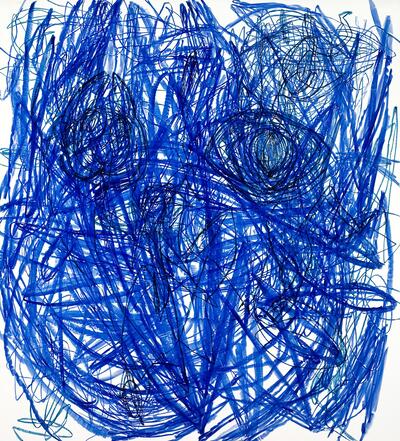The wild abstraction of Otto Zitko
Since abstract art broke with all the limits of the pictorial practice itself, the plastic and expressive values intrinsic to it took on all the significant weight to proclaim its full autonomy and total freedom. The triumph of line, space, color and matter, above any hint of figuration, opened the way to new ways of conceiving, understanding and contemplating art, far beyond a tangible reality that could no longer express the vision of an atomized world.
In this sense, Otto Zitko’s work is a direct heir to both the American abstract tradition and the Viennese activists of his homeland.
His pictorial process, far from the spontaneity and immediacy that a priori may seem, hides a complex and detailed study of light, space, texture and surface with which he develops a large-scale calligraphic exercise. Traversing aluminum panels and even large format walls, Zitko’s compositions will find their sustenance in a seemingly endless line, which, expanding over the surface almost at the rhythm of the blood pulse, acquires the physical appearance of a dense mass made up of lines, twists and curves. The strokes, which like spontaneous automatisms flow in a rhythmic and wild composition, become the expression of a primary impulse linked, on the one hand, to art-brut and, on the other hand, to surrealist automatic writing that escapes any rational thought.
Nevertheless, beneath the apparent expressive character of his work lies a complex and studied structure of self-organization whose reflexive charge is symbolized in what the artist calls der lange Weg der Linie (the long path of the line) and in which it encloses a series of dualities (interior-exterior, subject-object, and particular-common) that challenge the viewer at different levels of consciousness. On the one hand, by looking closely at the work we discover the fragmented faces that can be guessed between the layers underlying the energetic gestures, emerging in the painting as the expression of a frenetic and overstimulated alienating way of life and, on the other hand, by drawing the movements at different speeds, lengths, pressures and intensities very often helped by a pole, the artist recreates in his work an illusory game between the two-dimensional and three-dimensional space that requires a multiplicity of points of view from the viewer.






